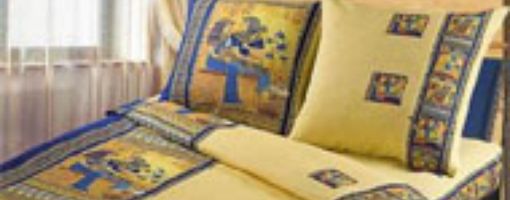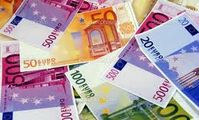Textiles and Garments

WHY ARE MORE and more global brands sourcing their ready-made garments from Egypt? Consider this: Abundant supplies of high-quality long-staple and extra-long-staple cotton. A highly skilled, cost-effective workforce — the average hourly pay rate in the Egyptian textile sector is US $ 0.9 per hour. A wide network of preferential trade agreements, many of which provide tariff-free access to major global textile markets. A community of suppliers and manufacturers whose expertise in meeting global quality standards dates back to the nineteenth century. Proximity to major global markets, supported by a strong network of both Mediterranean and Red Sea ports.
Those advantages and more are attracting global brands such as Marks & Spencer. GAP, Wal-Mart. Levi Strauss, Target and Calvin Klein to source from and invest in Egypt. As early as 2002. leading international fashion house Valentino outsourced 1% of its menswear needs to Egypt's A rata Group. At the same time, major textile powers such as China and Turkey are establishing industrial zones in Egypt, while a growing number of foreign companies are relocating their entire production opera-lions to benefit from the advantages of the local industry.
Meanwhile, a handful of home-grown players are becoming export powers in their own rights by acquiring design shops and labels in other markets. Others have responded to the increasing opportunities and competition within the sector by expanding and updating their operations, or going into partnership with multinational players to manufacture and sell products in Egypt's booming market or for export around the world.
Ranked among the top three carpet producers worldwide. Oriental Weavers is one such company, selling carpets in over 90 countries and capturing 30% of the United Slates' market through its US-based Sphinx division.
Attracting New Investment
Offshore investment has accounted for 37% of all investment in the ready-made garments sector since 1970. Total investment in the sector (foreign and domestic) has risen by an average of 9.5% per year over the past four years.
The world's fastest-growing economy has caught on. too, In 2006. Egypt and China agreed to facilitate Chinese investments in the Egyptian textiles and ready-made garments industry through the establishment of a Chinese-Egyptian industrial zone. The two countries have also agreed to set up an Egypt-based Textile Technology Service Center to help upgrade processes and technology used by producers based in Egypt.
Where Quality Counts
Egypt's commitment to quality dales back to the reign of the reformer Muhammad Ali Pasha (1805-1848). making Egypt one of the world's most experienced garment and textile centers. Today, Egypt is home to the only fully vertically integrated textiles industry in the Middle East: The whole production process, from the cultivation of cotton to the production of yarns, fabrics and ready-made garments, is carried out domestically.
Egypt's textiles and garments industry employs 25% of the country's industrial labor force. As the industry adopts global quality standards, more and more companies are signing up for unique programs through the government's IndustrialTraining Center (ITC). which provides subsidized training tailored to the specific needs of foreign and domestic industrial producers alike.
Supplying the World
Egypt exported more than US$ 1.2 billion worth of textiles and ready-made garments in 2006-07. accounting for 18% of the country's non-oil exports that year. More than 38.2% of the exports consisted of ready-made garments, followed by cotton textiles (21.8%). cotton yarn (10.8%). cotton (10.5%) and carpets and other floor coverings (10.5%), among other categories. Major domestic exporters include Saba Apparel (exports of E.GP 1.46 billion in calendar year 2007) and Swiss Garments (EGP 408.64 million in 2007).
The US is Egypt's single largest market for textiles, buying US$ 1X0.8 million in 2006-07. followed by the European Union (US$ 160.7 million), then Asia and non-Ell European countries.
Through a broad-based campaign to attract new foreign and domestic investment to the sector— including an intensive campaign to recruit foreign retailers, modernize the industry and build on the success of free trade agreements — the Egyptian government plans to more than double textile exports to US$ 3 billion by 2011.
Your Rating:
Overall rating: 1.000
Totally voted: 1
Comments
Weather in:
Exchange Rates
-
IMF loan expected next month
Apr 22, 2013, rating: 3.000, 3 votes Egypt may secure an International Monetary Fund loan agreement in about amonth, state news agency MENA reported, quoting "informed" sources ...
Egypt may secure an International Monetary Fund loan agreement in about amonth, state news agency MENA reported, quoting "informed" sources ...
-
Country's diesel reserve only enough for three days.
Feb 05, 2013, rating: 5.000, 1 votes Egypt’s strategic reserve of diesel fuel used for trucks and grouptransport vehicles can meet demand only for three days ...
Egypt’s strategic reserve of diesel fuel used for trucks and grouptransport vehicles can meet demand only for three days ...
-
Egypt received 11 million tourists in 2012 and aims to boost that number to 14 million in 2013.
Jan 22, 2013, rating: 3.000, 2 votes
Egypt received 11 million tourists in 2012 and aims to boost that number to 14 million in 2013.
-
Egypt limits travelers leaving country to US$10,000 in cash
Dec 26, 2012, rating: 3.250, 4 votes Egypt has banned travelers from carrying more than US$10,000 in foreigncurrency cash in or out of the country ...
Egypt has banned travelers from carrying more than US$10,000 in foreigncurrency cash in or out of the country ...
-
National Coalition on Climate Change for Egypt is born
Nov 30, 2012, rating: 5.000, 1 votes The global COP18 conference on climate change opens in Doha Monday.About 17,000 participants from all over the world ...
The global COP18 conference on climate change opens in Doha Monday.About 17,000 participants from all over the world ...
-
Judgment for sexual harassment
Nov 14, 2012, rating: 3.600, 5 votes A man was sentenced to two years in prison and fined LE 2,000 for sexually harassing a woman, an ...
A man was sentenced to two years in prison and fined LE 2,000 for sexually harassing a woman, an ...








